Insects are a diverse group of animals and can be found almost anywhere on Earth. Amazingly, some insects are small enough to fit through an opening the size of a pinhead.
Others, like some beetles and ants, are large enough to be seen by the human eye! What’s even more fascinating about these insects is that most of them are attracted to light.
Insects are attracted to light because it helps them find food sources. They have compound eyes, which contain multiple lenses, allowing them to see at different levels of detail depending on where they are looking.
Table of Contents
Are Most Insects Attracted to Light?
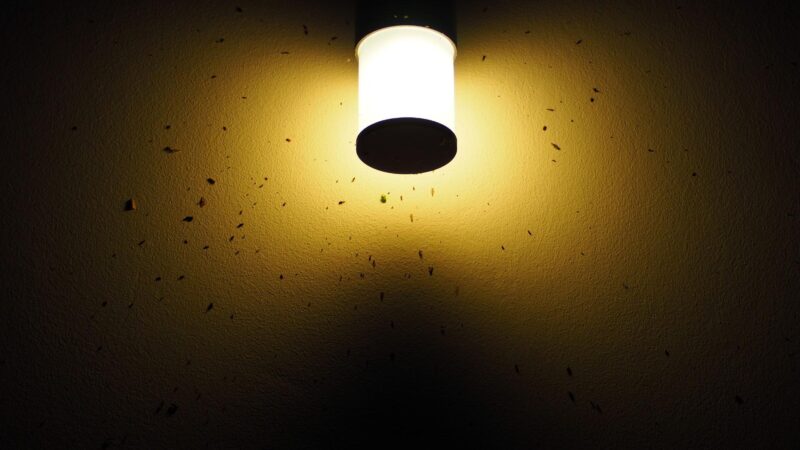
Most insects are attracted to light because it allows them to find prey. They use vision and a variety of other senses to find their food.
For an insect to see, it must have eyes. The eyes of an insect are located on its head or the front of its body. It is made up of many tiny lenses that focus light onto a photoreceptor, which converts light into electrical impulses.
More interestingly, another reason why they are attracted to light is that the light that insects use for communication and mating is similar in color and intensity to the light that they absorb through their eyes.
This means that when an insect looks at something with its eyes, it can tell if there is something important or interesting nearby by just looking at its surroundings.
In addition, when an insect looks at something else (like a mate), it can see how bright or dark it is and what color it is. This helps them determine if it’s worth pursuing or not.
What Is Phototaxis?
Phototaxis is the behavior in animals and insects that allows them to move toward the light. It’s a form of chemotaxis that enables the cell to move towards a light source.
It is helpful for organisms that have no eyesight or other means of detecting light and can only rely on the information coming from their visual system.
Phototaxis works on the same principle as chemoreception. If there is something to eat in the area, the cells affected by the light will move towards it.
Do Flies Use Light for Safety?
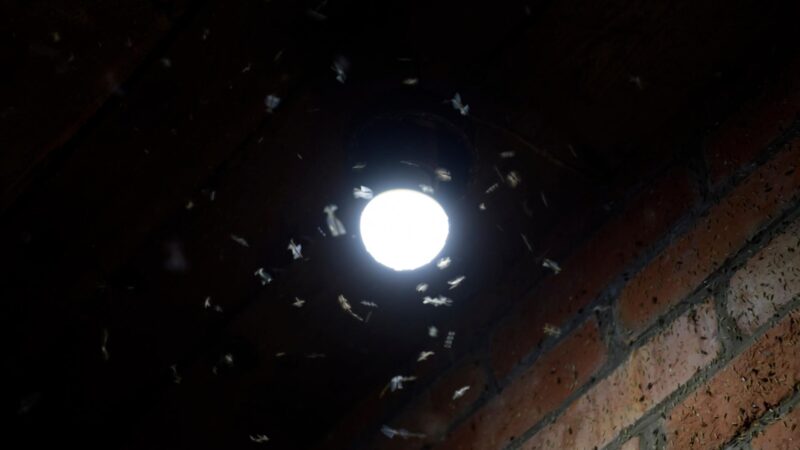
Flies use light for safety. Their eyes are made up of special pigments called photoreceptors that allow them to detect light. When they’re in the dark, those pigments don’t work as well.
They use the light from other sources—like the sun or a flashlight—to help them observe any threats, whether or not there is an existing threat of predators around them.
Do Flies Use Light for Navigation?
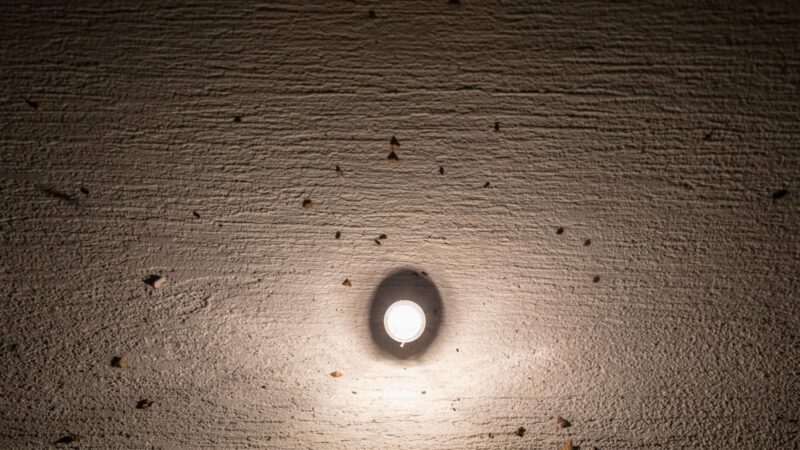
Flies are known to use light for navigation. They have an eye that allows them to detect light, and they can respond to changes in the environment by moving towards or away from the source of light.
The eyes of flies are sensitive to blue and UV light, which makes it possible for them to detect changes in the environment.
Flies also have a small transparent body with a series of compound eyes located on top of their heads.
This allows them to see light at different angles and distances, which helps them navigate through the air to find food sources.
Why Are Flies Attracted to Light?
Flies are attracted to light because the presence of light can trigger a pheromone-releasing organ in their bodies. The pheromone is called bombykol. It is released when the flies sense that they have been touched by another fly.
Bombykol is a chemical that allows the flies to recognize each other as members of their species, even if they do not smell like each other. This creates an environment where these flies can breed without fear of being eaten by predators.
Additionally, similar to most insects, flies also tend to be attracted to lights because they use them to find food.
Why Are Flies Attracted to LED Lights?
Flies are attracted to LED lights because they provide an abundance of light with very little heat. The LEDs emit virtually no heat, so the flies do not feel uncomfortable or threatened by the rays from the lamps.
Flies also avoid areas where there is a lot of heat and light, like in a window or near a hot oven.
Do LED Lights Kill Flies?
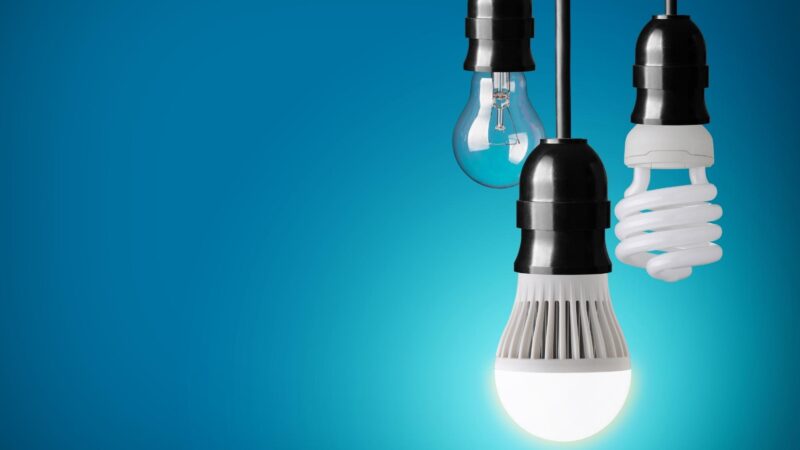
LED lights can’t kill flies. As you probably already know, led lights are made up of several layers. The outermost layer is made up of a polymer resin, and the innermost layer is made up of an organic compound known as an emitter.
This emitter emits ultraviolet light (UV) at a wavelength of 365nm, which is what attracts flies to fly toward it. While UV light has been shown to attract flies, it doesn’t kill them.
That’s why fly swatters and led lights aren’t often found together in public spaces—you’re not going to get rid of flies with one or the other!
Are There Lights That Kill Flies?
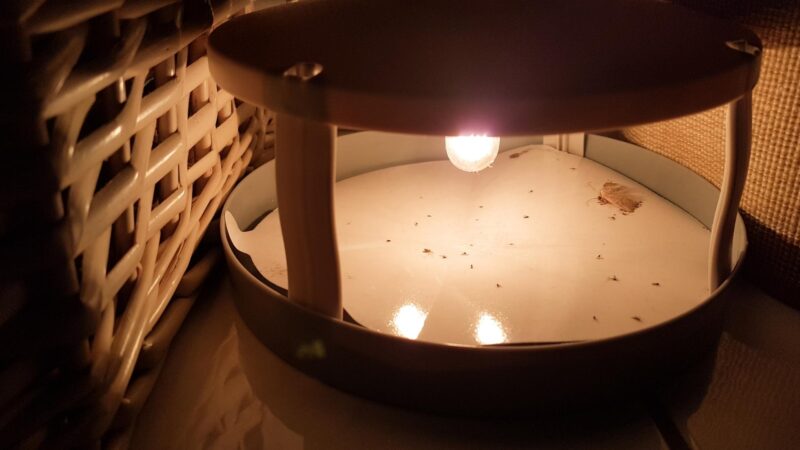
There are many different types of lights that can be used to kill flies. The most common type of light is the one that emits high amounts of ultraviolet light, which can be found on the sun or inside a fluorescent bulb.
The other kind of light that kills flies is the blue-green light, which is similar to natural sunlight in color and intensity but does not look as bright as ultraviolet light. Flies do not notice it as much and will not avoid it as much as ultraviolet lighting does.
Why Are Flies Attracted to UV?
Flies are attracted to UV light for several reasons. One reason is that flies have a primitive brain that makes them sensitive to visual cues. To avoid being eaten, they have developed complex visual systems.
It allows them to detect movement and differentiate between objects in their environment. This means they can see things like UV light.
Another reason is it stimulates their senses of vision and smell. They can’t see well in the dark. So when they want to find food, they rely on their eyesight. UV light is not only visible to them, but it also stimulates their sense of smell.
This allows them to find food that is being cooked or buried underground, or even a carcass decaying in the woods.
Does UV Light Attract Flies in Daylight?
UV light does attract flies in daylight. Flies are attracted to ultraviolet light because it is the same wavelengths of light that they use to find their way around in the dark.
They have compound eyes that can see in the ultraviolet range, and their antennae contain photoreceptors that help them detect light.
In addition, flies have a special organ called a “blue-light receptor” that allows them to detect blue light in the spectrum between 400 nm and 500 nm. This organ is responsible for detecting UV-light.
Without it, flies would be unable to detect UV-light. It also not be able to fly around at night or during cloudy days when there isn’t enough visible light available for them anymore (since they don’t have blue-light receptors in their eyes).
What Colors Do Flies Not Like?
Flies generally don’t like bright colors. They don’t like red, orange, and yellow, as well as blue, purple, and green. These colors are perceived as harmful by flies.
Flies’ eyes are sensitive to light, and they see color differently from humans. Red, orange, and yellow all have wavelengths more visible to them than other hues in the spectrum. They will avoid these colors because they are uncomfortable to look at.
Summary
In an attempt to learn more about insects, it’s no surprise that insects are attracted to light. Light attracts insects in the same way it attracts us. Nevertheless, insects are attracted to light, not repelled by it.
Whether they are looking for a meal or trying to find a place to live, these creatures flock to bright places and bright objects specifically.
So the next time you experience being visited by a herd of flies in your room, remember to turn off the light source!